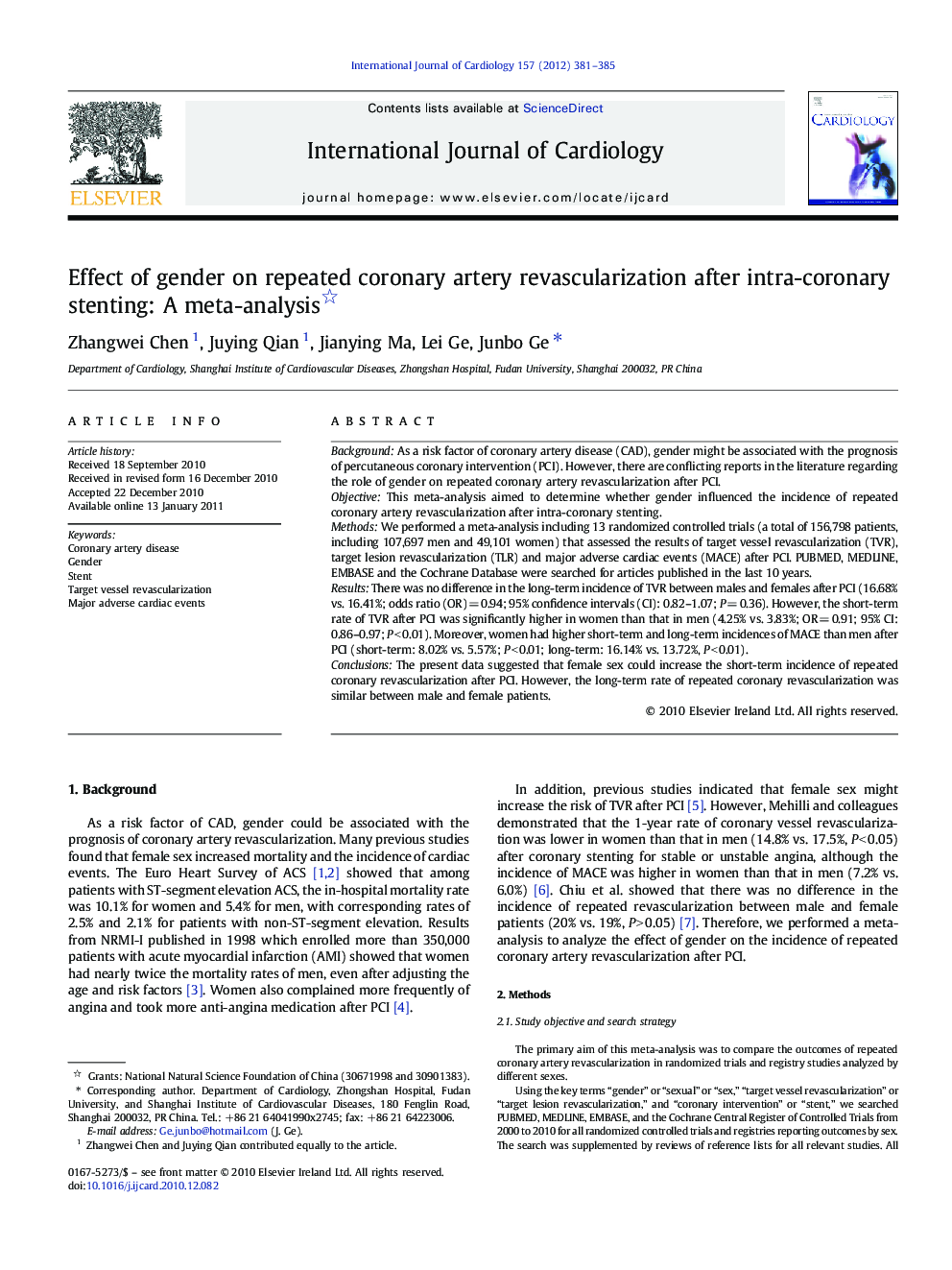| Article ID | Journal | Published Year | Pages | File Type |
|---|---|---|---|---|
| 5978181 | International Journal of Cardiology | 2012 | 5 Pages |
BackgroundAs a risk factor of coronary artery disease (CAD), gender might be associated with the prognosis of percutaneous coronary intervention (PCI). However, there are conflicting reports in the literature regarding the role of gender on repeated coronary artery revascularization after PCI.ObjectiveThis meta-analysis aimed to determine whether gender influenced the incidence of repeated coronary artery revascularization after intra-coronary stenting.MethodsWe performed a meta-analysis including 13 randomized controlled trials (a total of 156,798 patients, including 107,697 men and 49,101 women) that assessed the results of target vessel revascularization (TVR), target lesion revascularization (TLR) and major adverse cardiac events (MACE) after PCI. PUBMED, MEDLINE, EMBASE and the Cochrane Database were searched for articles published in the last 10Â years.ResultsThere was no difference in the long-term incidence of TVR between males and females after PCI (16.68% vs. 16.41%; odds ratio (OR)Â =Â 0.94; 95% confidence intervals (CI): 0.82-1.07; PÂ =Â 0.36). However, the short-term rate of TVR after PCI was significantly higher in women than that in men (4.25% vs. 3.83%; ORÂ =Â 0.91; 95% CI: 0.86-0.97; PÂ <Â 0.01). Moreover, women had higher short-term and long-term incidences of MACE than men after PCI (short-term: 8.02% vs. 5.57%; PÂ <Â 0.01; long-term: 16.14% vs. 13.72%, PÂ <Â 0.01).ConclusionsThe present data suggested that female sex could increase the short-term incidence of repeated coronary revascularization after PCI. However, the long-term rate of repeated coronary revascularization was similar between male and female patients.
